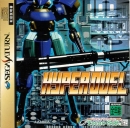HebrewGamer said:
You can read it everywhere except the official source...anyway, moving on. BTW, repeating a talking point over and over again does not make the point a fact, just so you know.
You mentioned before how the Switch Lite was a price cut. This is not true. selling a lesser variant of a piece of hardware is not a price cut. The xbox series S is not a price cut. truthfully, the Switch OLED is not a price increase, they're just different variants. the original is the standard model, OLED is the premium model, and the Lite is the economy model. the 3DS being discounted $80 6 months in is a price cut.
|
The link that I posted you earlier was official from Sony from their report from 2010. It is presented in other places too. It is not just imaginative number.
And the fact is already told. You hate on the PS2 and deny it's success that's it. No one denies the Switch success, but just to put it above the PS2, you downplay it this is the fact. Switch Lite and the inflation both took most of the effect of a price cut. They are not 100% price cut because price cut is simply selling the system for less.
The inflation in time, that those 300$ are less now, we can't really measure in how much units added it has because of that and an given case where the inflation isn't here and price cut would be present. Of course it's not 1:1 like price cut, but as I said the majority of the boost of official price cut, is included in the today numbers of Switch. In fact I went and checked, the inflation is almost 30% by now. 300$ from 2017 are like 385$ now. So you have almost 100$ up. So you now get the Switch for almost 100$ less than what would be the 2017 price now. This is pretty much a price cut. Yes there is difference with every year, but I checked the last few years too. Its growing each year. So in 2020 that would be 340$. It was almost the same in 2021 but it raiset to 360$ in 2022 and 370$ in 2023. So there is your pricecut effect.
The Lite model has 23.54 from the last official report. And from those one of the reasons for the majority of the buyers was exactly it's lower price. If someone has money, he would go straight for the OLED or at least for the normal model. If this was official price cut then the Switch would got maybe 20-25M boost in the long term. With the Lite from 23.54M the customers who chosed it with a major reason being the lower price are at least 15M if not 20M.
So in direct terms it's not 100% price cut yes. But it's taking 80% of the effect of the real pricecut. For example the years in the previous console generation the inflation wasn't as big, and on top of that there were more price cuts too. Now the whole model goes for no pricecut, as you can see PS4 and XB1 had only 1 pricecut and PS5 and XBSX even had price increase.
So all in all the term "Switch didn't have pricecut" is true, however it has almost the same thing. So there is not much point in doing this statement in first place
Last edited by XtremeBG - on 13 June 2024



































